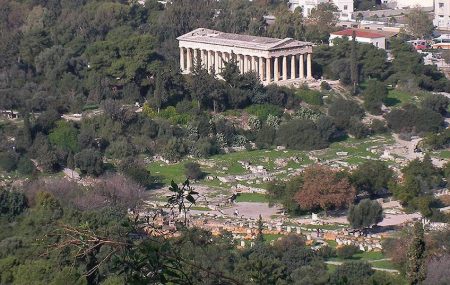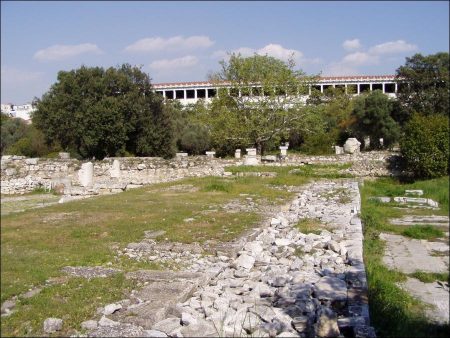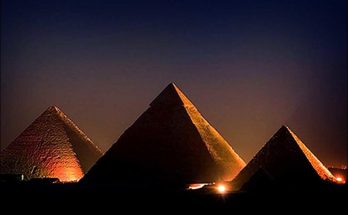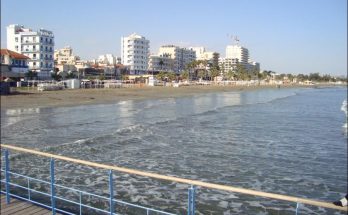The Ancient Agora of Classical Athens is the best-known example of an ancient Greek agora, located to the northwest of the Acropolis and bounded on the south by the hill of the Areopagus and on the west by the hill known as the Agoraios Kolonos, also called Market Hill.
As you walk through the ruins of the Agora in Athens (open market area and place of assembly), keep in mind that this was the magnificent citycenter of ancient Athens.
Philosopher Socrates and his disciples came daily to Agora for discourse. One of the first buildings you’ll see is the Temple of Hephaistos, named after the Vulcan God, who shared with Athena the honor of being a patron deity of the arts and crafts. The temple was built between 4th and 5th century B.C., and is the best preserved of all the Greek temples. Between the Theseum and the Stoa of Attalos, you’ll simply have to imagine that you are walking between other temples, government buildings, gymnasiums and stoas.
Buildings and Structures of the Classical Agora
Plan showing major buildings and structures of the agora of Athens as it was in the 5th century BC
Metroon
Peristyle Court
Mint
Enneakrounos
South Stoa I and South Stoa II
Aiakeion
Strategeion
Agoraios Kolonos
Tholos
Agora stone
Monument of the Eponymous Heroes
Metroon (Old Bouleuterion)
New Bouleuterion
Temple of Hephaestus (Hephaestion)
Temple of Apollo Patroos
Stoa of Zeus
Altar of the Twelve Gods
Stoa Basileios (Royal stoa)
Temple of Aphrodite Urania
Stoa of Hermes
Stoa Poikile
Other Notable Monuments
A number of other notable monuments were added to the agora. Some of these included:
The Middle stoa which was the most extensive monument built during the 100s B.C.E.
A small Roman temple was added in front of the Middle stoa.
An Altar of Zeus Agoraios was added just to the east of the Monument to the Eponymous Heroes.
The Temple of Ares, dedicated to Ares, the god of war, was added in the north half agora, just south of the Altar of the Twelve Gods.
The Odeon of Agrippa and accompanying gymnasium were added in the centre of the agora.
The substantial Stoa of Attalos was built along the eastern edge of the agora.
A collection of buildings were added to the south-east corner: the East stoa, the Library of Pantainos, the Nymphaeum and a temple.
There is evidence of a Synagogue in the Agora of Athens in the 3rd century.
A statue of the Roman emperor Hadrian was located near the metroon.
The Temple of Zeus Phratrios and Athena Phratria dated to the 300s B.C.E. and is located near the Temple of Apollo Patroos.
The south end of what is believed to be a Basilica has been uncovered near Hadrian Street and is dated to the mid 100s C.E.
The Monopteros was located south of the Basilica and also dated to the mid 100s C.E. It had no walls, was a dome supported by columns and was about 8 meters in diameter.
The Bema was a speakers platform and was located near the Stoa of Attalos.
Related Link: Destination Athens and Greece.
Views: 586




